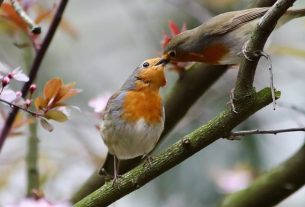Lawn Care and Landscaping experts emphasize a tailored approach for nurturing healthy lawns across different climates. Success begins with understanding local soil types, climate patterns, and the specific needs of various grass species. Optimal mowing heights for each grass type are crucial for promoting growth and minimizing weed presence. Aeration and overseeding enhance root health and encourage a dense, green turf that naturally deters weeds and pests. Fertilization should be customized, with cool-season grasses getting attention in fall and spring, and warm-season varieties during late spring or early summer. Efficient irrigation, adhering to local watering regulations, is key for maintaining a healthy lawn, and should be backed by smart technologies like moisture sensors and weather-based adjustments to optimize water usage. Integrated pest management (IPM) is essential for handling any pest or disease issues with minimal chemical use. Regular monitoring and proactive maintenance are necessary for sustaining a thriving lawn year-round, ensuring resilience and beauty in diverse environmental conditions. By leveraging these specialized techniques, Lawn Care and Landscaping professionals help achieve a lush, robust lawn that requires less water and remains aesthetically pleasing, highlighting the importance of expert care for quality landscapes.
Embark on a journey through the nuanced world of lawn care with our comprehensive guide, designed to nurture a thriving landscape under any climatic condition. Delve into the essential practices that contribute to a vibrant lawn, master the art of efficient irrigation systems to conserve water while optimizing growth, and strategize on fertilization and pest control to ensure your yard remains healthy and lush year-round. Whether you’re a seasoned lawn care enthusiast or new to landscaping, this article will equip you with the knowledge to maintain an enviable outdoor space, all within the realm of sustainable and practical turf management.
- Essential Practices for Achieving a Vibrant Lawn in Varied Climates
- Mastering the Art of Effective Lawn Irrigation Systems
- Strategic Fertilization and Pest Control for a Healthy Landscape Year-Round
Essential Practices for Achieving a Vibrant Lawn in Varied Climates

Lawn care and landscaping professionals emphasize a tailored approach to achieve a vibrant lawn across varied climates. The foundation of robust turf management lies in understanding local soil conditions, climate patterns, and grass species’ specific needs. Consistent mowing at the right height for the grass type is crucial, as it encourages healthy growth and minimizes weed competition. Aeration and overseeding are practices that allow air, water, and nutrients to reach the grass roots, promoting a thick, lush turf that outcompetes weeds and pests.
Fertilization should be climate-specific; for instance, cool-season grasses thrive with fall and spring feeding, while warm-season varieties fare best with a robust application in late spring or early summer. Irrigation strategies must be adjusted to local watering regulations and the lawn’s water requirements. Integrated pest management (IPM) is essential for identifying, monitoring, and managing any pest or disease issues that arise, ensuring the health of the lawn without overreliance on chemical treatments. Regular inspection and proactive maintenance are key components in maintaining a thriving lawn, no matter the climate. By adhering to these practices, homeowners and landscaping professionals can achieve a lush, resilient lawn that withstands the challenges of diverse environmental conditions.
Mastering the Art of Effective Lawn Irrigation Systems

Effective lawn irrigation systems are a cornerstone of comprehensive lawn care and landscaping practices, ensuring the health and vitality of turfgrass under various environmental conditions. Expertise in this area is not just about watering the lawn; it encompasses understanding the unique needs of different grass varieties, soil types, and local climate patterns. A well-designed irrigation system tailored to these factors can optimize water usage, promote root growth, and reduce runoff and waste. Advanced systems with precision nozzles and scheduling capabilities allow for targeted delivery of moisture where it’s most needed, reducing the likelihood of overwatering or underwatering that can lead to turf stress or disease. By integrating smart technologies such as soil moisture sensors and weather-based adjustments, lawn care professionals can fine-tune irrigation schedules, ensuring efficient water use while maintaining a lush, green landscape. This level of expertise in effective lawn irrigation not only conserves a valuable resource but also contributes to the overall aesthetic appeal and longevity of landscaped properties, underscoring the importance of professional knowledge in this field. Landscaping companies that specialize in lawn care understand the critical balance between water conservation and turf management, making them indispensable partners for homeowners and commercial property managers seeking to maintain pristine outdoor spaces.
Strategic Fertilization and Pest Control for a Healthy Landscape Year-Round

A robust turf management plan hinges on strategic fertilization and effective pest control to maintain a healthy landscape throughout the year. Strategic fertilization involves the careful application of nutrients tailored to the specific needs of the grass species present in the landscape. By understanding the optimal timing for each type of fertilization, such as pre-emergent and post-emergent applications, turf managers can ensure that the lawn receives all necessary nutrients, fostering a thick, resilient turf. This approach not only supports healthy growth but also fortifies the grass against environmental stressors like extreme temperatures and drought conditions.
In parallel with fertilization, pest control is a critical component of year-round turf management. Pests can rapidly decimate a landscape if left unchecked. Professionals employ an integrated pest management (IPM) strategy that combines monitoring, identification, and targeted interventions to manage pest populations at sustainable levels. This approach minimizes the risk of pesticide overuse and resistant pest strains while maximizing the effectiveness of pest control measures. By staying ahead of potential infestations, turf managers can protect the landscape’s integrity and ensure that it remains a lush, vibrant environment throughout the seasons. Lawn Care and Landscaping expertise are paramount in implementing these strategies effectively.
Lawn care and landscaping professionals play a pivotal role in maintaining healthy, lush greenery in various climates. By mastering essential practices tailored to local conditions, implementing effective irrigation systems, and strategically fertilizing with pest control, experts ensure a thriving lawn throughout the seasons. These expert insights provide homeowners and turf managers with the knowledge necessary for achieving and sustaining an optimal landscape, thereby enhancing both the aesthetic appeal and ecological balance of outdoor spaces. The comprehensive guidance offered in this article underscores the importance of informed, proactive lawn care practices, contributing to greener environments and community well-being.



